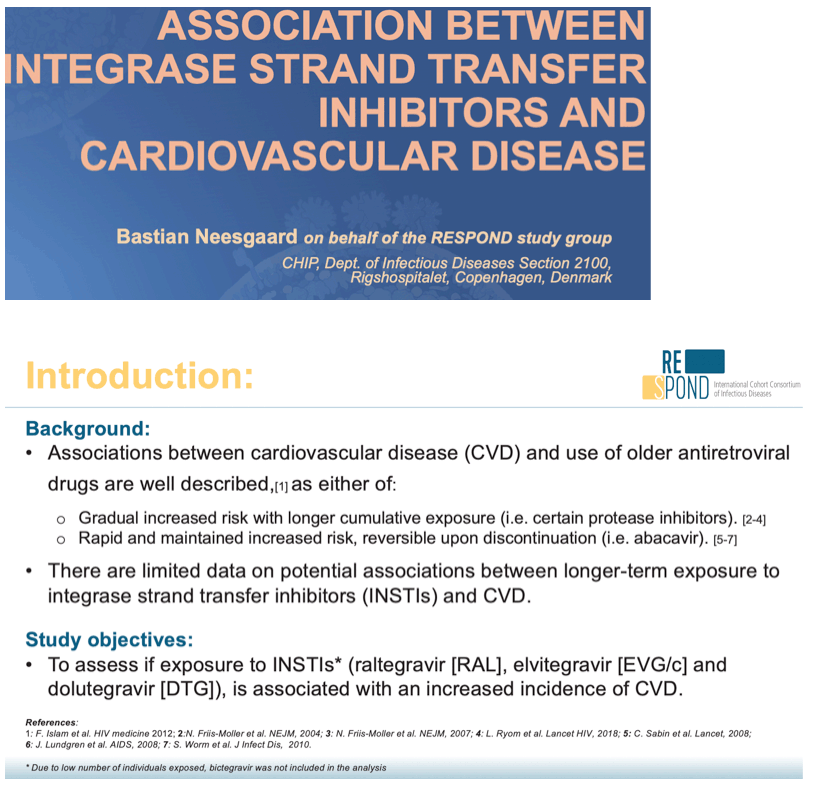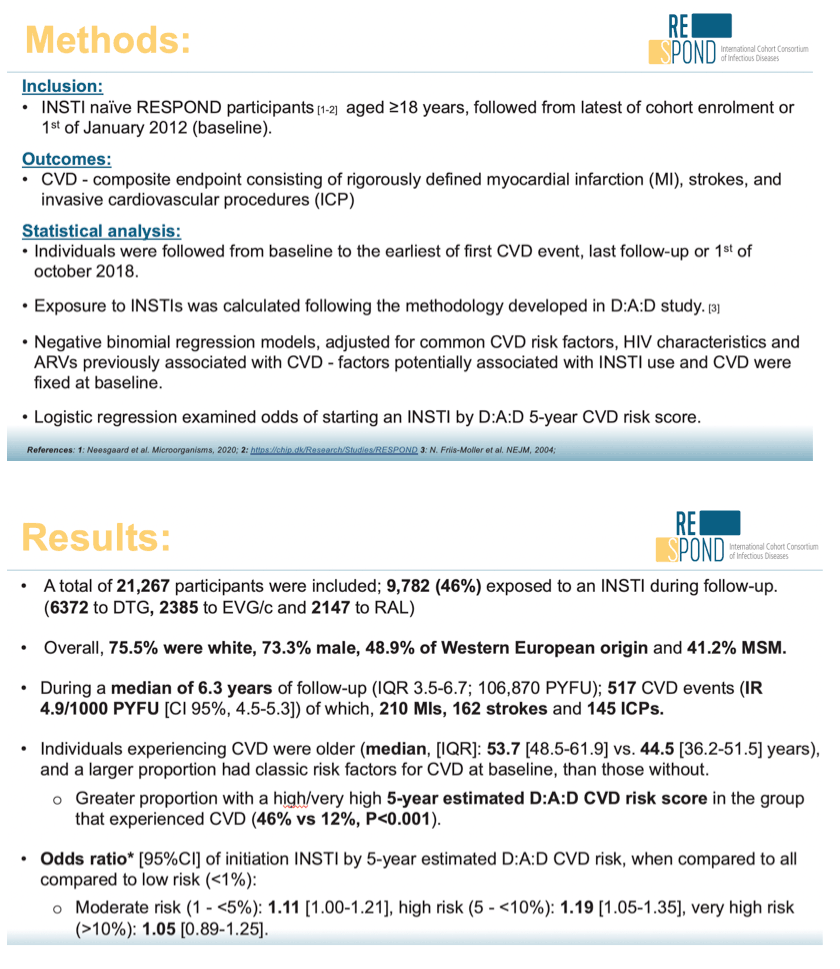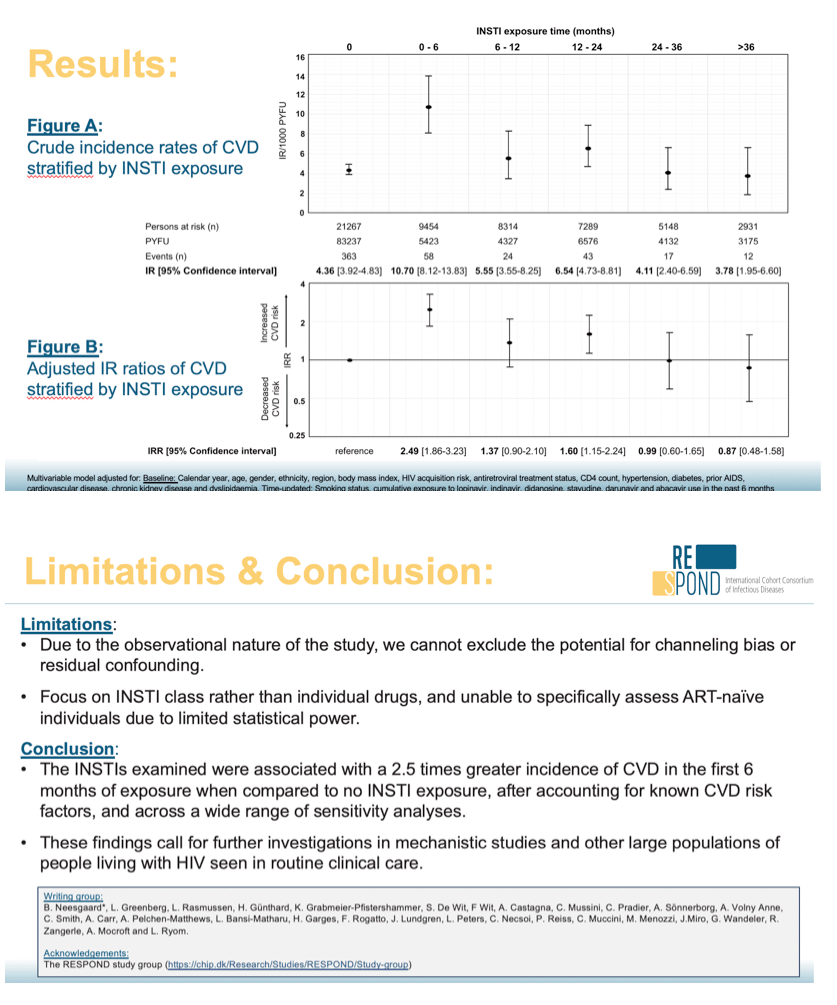 |
 |
 |
| |
ASSOCIATION BETWEEN INTEGRASE INHIBITORS (InSTIs) AND CARDIOVASCULAR DISEASE (CVD)
|
| |
| |
CROI 2021 March 6-10 Reported by Jules Levin
Bastian Neesgaard, for the RESPOND Study Group
Rigshospitalet, Copenhagen, Denmark
Background: While associations between use of older antiretroviral drug (ARV) classes and CVD are well described, there are limited data related to use of InSTIs.
Methods: RESPOND participants were followed from latest of cohort enrolment or 1. Jan. 2012 (baseline) to the earliest of first CVD event (myocardial infarction [MI], stroke or invasive cardiovascular procedure [ICP]), last follow-up (FU) or 1. Oct. 2018. Logistic regression tested associations between 10-year D:A:D CVD risk score and starting an InSTI. To assess associations between CVD and InSTI exposure, multivariable negative binomial regression models were adjusted for demographics, traditional CVD risk factors, HIV-related factors, antiretroviral treatment (ART) status and concomitant or prior use of ARVs associated with CVD; where appropriate, variables were time-updated (figure footnote).
Results: Of 21267 included individuals, 46% were exposed to one or more InSTIs during FU (2147 to raltegravir, 2385 to elvitegravir and 6372 to dolutegravir). Compared to low baseline D:A:D CVD risk, odds of starting an InSTI were higher for those with a medium and high risk (odds ratio, 95% confidence interval, CI; 1.1 [1.0-1.2] and 1.2 [1.1-1.4]), though not reaching significance for those with a very high risk (1.1 [0.9-1.2]). During a median 6.3 years of FU (interquartile range 3.5-6.7; 106,870 person-years, PYFU), 517 individuals experienced a CVD event (incidence rate, IR, 4.9/1000 PYFU [4.5-5.3]: 210 MIs, 162 strokes, 145 ICPs;). The crude CVD IR increased from 4.5/1000 PYFU [3.9-4.8] in those with no InSTI exposure to 10.7/1000 PYFU [8.1-13.8] at >0-6 months and decreased steadily thereafter (Figure). After adjustment, compared to those never exposed, the IR ratios of CVD peaked at >0-6 months of InSTI exposure (2.5 [1.9-3.4]) but were comparable to those unexposed thereafter (p <0.01, Figure). Results were consistent in models adjusting only for D:A:D CVD risk score, and models excluding ICP events or individuals with prior CVD. There was no interaction between InSTI exposure group and age (p=0.3) or D:A:D CVD risk strata (P=0.6)
Conclusion: In the large RESPOND collaboration use of InSTIs was associated with an increased incidence of CVD in the first 6 months of exposure after accounting for known CVD risk factors including the ART backbone and across a wide range of sensitivity analyses. While we cannot fully exclude possible channeling bias or residual confounding, these findings call for further investigations.



|
| |
|
 |
 |
|
|